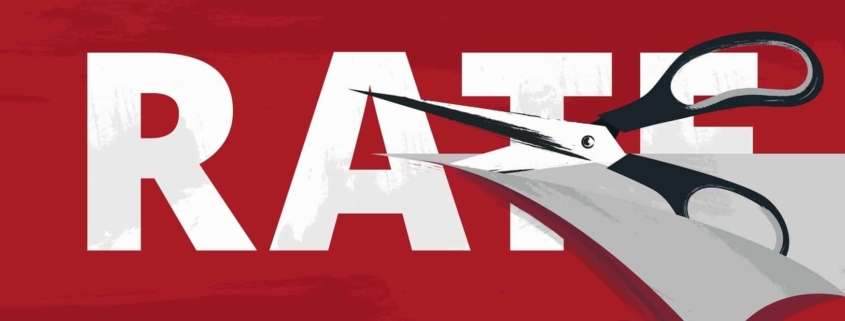For most business owners, handling business taxes is one of the most cumbersome and dreaded parts of business ownership. However, running a business requires paying attention to and complying with tax regulations. While business taxes are complex, managing them doesn’t have to be difficult. By taking steps to prepare for filing your taxes, business owners can simplify the process of maintaining tax compliance.
Understanding the various types of taxes small businesses may have to pay, as well as the steps business owners should take when preparing to file taxes will make the entire tax management easier…and maybe even a bit more tolerable.
Types of Small Business Taxes
Small businesses may be responsible for several different types of taxes. Some of the taxes your small business must pay will depend on the structure and location of your business.
Income Tax
The IRS requires all businesses except partnerships to file an annual income tax return. Partnerships are required to file an information return. The return form your business uses—and the way you pay income taxes—will depend on how your business is structured. For example, corporations are taxed separately from their owners, while sole proprietors report their personal and business income taxes using the same form.
Federal income tax is a pay-as-you-go tax. That means taxpayers must pay the tax as income is earned or received throughout the year. Many businesses are required to make estimated tax payments to cover income tax liability every quarter. It’s a good idea to talk to a tax professional to determine whether your business needs to make quarterly tax payments.
Payroll Tax
A business that has employees must pay payroll taxes as a percentage of employee payroll. Payroll taxes include Social Security, Medicare, and unemployment taxes. The taxes paid on Social Security and Medicare are together known as FICA taxes, named for Federal Insurance Contribution Act. They are split evenly between the employer and the employee, and the employer must withhold the employee’s portion from their paychecks.
Employers are responsible for paying unemployment tax at the federal level and at the state level if required by their state. Employees do not contribute to unemployment tax, with three exceptions. In Alaska, New Jersey and Pennsylvania both employers and employees pay state unemployment (SUTA) tax.
Employment Tax
If you have employees, you have employment tax responsibilities that include paying taxes and filing forms. As mentioned above, employment taxes include:
- Social Security and Medicare taxes
- Federal unemployment tax (FUTA)
- State unemployment tax (SUTA)
In addition, employers are responsible for handling federal income tax withholding for employees. That means that you withhold the appropriate amount from employee wages for their personal income taxes, based on the employment forms they provide to you. Employers must also submit those funds to the federal government on their employees’ behalf and file forms such as W2 forms to report the amounts withheld.
Excise Tax
Some types of businesses must pay federal excise taxes, depending on the products they sell or the way they operate their businesses. Federal excise taxes include:
- Environmental taxes
- Communications and air transportation taxes
- Fuel taxes
- Taxes on the sale of heavy trucks, trailers, and tractors
- Taxes on the sale or use of different types of items
Self-Employment Tax
Self-employment tax is the tax that self-employed individuals owe to the federal government to help fund Medicare and Social Security. Employees split these taxes with their employer, as each one pays half the FICA taxes. But self-employed individuals must pay the full amount, which is equal to 15.3% of their wages.
State and Local Taxes
Your business may need to pay state and local taxes, depending on its location and business structure. Check with state and local governments to learn your specific business tax obligations.
The most common types of state and local tax requirements for small businesses are income taxes and employment taxes. If your state charges income tax, your business structure will determine how you pay it. Like with federal income tax, corporations are taxed separately from their owners, while sole proprietors report their personal and business income taxes using the same form.
If your business has employees, you’ll have to pay state employment taxes, which might include worker’s compensation insurance, unemployment insurance, and temporary disability insurance. You may also need to withhold state income tax for your employees.
Many state and municipal governments also charge sales tax. If you’re responsible for paying sales tax, it will be based on a percentage of your sales.
How to File Business Taxes
To file business taxes, start by assembling all your business financial documents from the tax year. You’ll need records of business transactions to calculate income, expenses, and deductions.
You will also need to locate the right IRS tax form, based on your business structure. If your business operates as a sole proprietorship or a single-member LLC, you can report all business income and expenses on a Schedule C attachment to your personal income tax return. But if your business is organized as a corporation or you choose to treat your LLC as a corporation, you’ll have to prepare a separate corporate tax return using Form 1120 for C-corporations or Form 1120S for S-corporations. Multi-member LLCs are considered partnerships and usually file Form 1065.
Keep in mind that there are deadlines for filing your tax forms, and it’s important to meet them. If you use a Schedule C, it’s part of your personal tax return (Form 1040) and has no separate filing deadline. It’s subject to the same April 15 deadline as your personal return.
If you’re taxed as a C-corporation and file a Form 1120, you must file it by the 15th day of the fourth month following the close of the tax year. For most taxpayers, that’s April 15. If your business is an S-corporation or a partnership, you need to file a Form 1120S or Form 1065. These forms are due by the 15th day of the third month following the close of the tax year, which is March 15 for most taxpayers. This form cannot be sent to the IRS with your personal income tax return; it must be sent separately.
When in doubt, contact a tax professional to help your business get started on filing taxes.
MORE >> Why Small Businesses Should File Taxes Early
Withholding Taxes
Withholding tax is the amount of money that an employer deducts from an employee’s gross wages and pays directly to the government. The amount withheld is a credit against the income taxes the employee must pay during the year. If too much is withheld, the employee will receive a tax refund after filing their tax return. If too little is withheld, the employee will have to pay the IRS more money when they file their return.
Estimating Taxes
If a person is self-employed or earns extra income in addition to employer-paid wages, they don’t have an employer making adequate tax payments on their behalf through withholding for that additional income. In that case, the person is responsible for estimating taxes based on their income and making estimated taxes to the government each quarter throughout the year. By estimating taxes, an individual or business can meet the IRS requirement of paying-as-you-go for income taxes—and avoid a huge tax bill at the end of the year.
Paying Federal vs Paying State and Local Taxes
Federal taxes are the same wherever you live in the United States, but state taxes can vary significantly. Some states charge a flat tax, and others use a progressive system that taxes high-income taxpayers more than others. While all federal taxes must be paid to the IRS, state and local taxes must be paid to state and local taxing authorities.
Small Business Tax Planning Strategies
There are several ways you can plan for—and potentially reduce—taxes. Consider the following strategies to help you prepare and minimize your tax liability.
Choose the Right Business Classification
Your business structure will determine not only the IRS form you use to file taxes, but also the amount you’ll have to pay. For example, some business structures, including sole proprietorships, LLCs, and S-corporations, are known as pass-through entities, which means the business income “passes through” to the business owner. The business owner pays taxes on the business’s earnings at their individual federal income tax rate. The business does not owe taxes separately, but the business owner may be responsible for paying self-employment taxes.
A C-corporation, on the other hand, must pay taxes on its taxable income at the business level. The U.S. federal corporate income tax rate is currently 21%. An owner of a C-corporation pays their own taxes separately from the business.
Separate Business and Personal Expenses
To file business taxes appropriately, it’s crucial to keep business expenses and personal expenses separate. That way, you can track business expenses and deduct them from your business earnings to lower your taxable business income.
The easiest way keep business and personal expenses separate is to have both a business and a personal bank account and credit accounts. ONLY use the bank and credit accounts you’ve assigned to your business for business expenses; and only use the bank and credit accounts assigned to personal expenses for personal expenses.
Maximize Deductions
Tax deductions decrease your taxable business income, which allows you to pay lower taxes. Most small businesses qualify for deductions, including business mileage, business interest and bank fees, legal and professional fees, business insurance, home office expenses, and business travel expenses.
Establish Employee Retirement Plans
If you have employees, you may be able to lower taxes by establishing employee retirement plans. Most businesses can take advantage of tax deductions when they contribute to retirement plans for employees.
Hire a Tax Professional
Trying to do taxes on your own can be overwhelming, time consuming and prone to mistakes – after all you’re not in the business of tax preparation so it’s unlikely you’re going to know the ins and outs of tax codes. Partnering with a tax professional can save you time and money, eliminating (or at the very least reducing) the hassle that comes with filing.
One small mistake on your tax forms could lead to a very expensive problem on your hands. Working with a reputable tax professional can reduce your risk of an audit and they can handle communications with the IRS if they come knocking on your door asking questions. In addition, a tax professional can ensure you’re getting all of the tax credits and deductions available to you. Often, just one missed deduction on your end could cover a significant portion of the fee that comes along with working with a tax professional. Added bonus: if you’ve filed your business taxes on your own in the past, a tax professional can look through these past returns and if any deductions were missed, they can amend them for you.
Tax Deductions and Credits for Small Businesses
If your business qualifies for tax deductions and tax credits, use them to decrease the amount of taxes you owe.
Business Expenses
Most business expenses are tax-deductible, such as postage, mileage, marketing and advertising, payroll and benefits, and other costs of doing business.
Tax Credits
A tax credit is different from a deduction—rather than reducing your taxable income, a tax credit allows you to subtract the amount of the credit from the amount of tax you owe. Small businesses may qualify for tax credits for employing workers from marginalized groups, purchasing an electric vehicle, providing childcare for employees, increasing energy efficiency in their buildings, to name a few.
Depreciation
When you purchase business equipment, the IRS allows you to take the deduction through depreciation, deducting a portion of the cost over several years, or to take the entire deduction in the year you purchase or finance the equipment.
Tax Filing Information for 2024
The tax filing deadline for tax year 2024 is April 15, 2025 for sole proprietors, LLCs and C-corporations. The tax filing deadline is March 15, 2025 for S-corporations. If you owe taxes, they are due on these dates, even if you file an extension, which will typically give you another six months to file the return. If you don’t have the funds to pay your tax bill by the due date, you might want to consider a business loan to cover your taxes, however doing so should be weighed VERY carefully and done only in certain circumstances.
Quarterly estimated tax payments for the 2024 tax year are due April 15, June 17, and September 16. The final payment is due January 15, 2025.
Small Business vs Large Business Tax Differences
Small businesses and large businesses typically experience some differences in paying taxes. Most of these differences are attributed to a difference in business structure. Large businesses are typically organized as C-corporations, which involve more paperwork and different tax filings. Smaller businesses are typically organized as sole proprietorships, LLCs or S-corporations, which have different tax filing obligations.
Deductions and Credits
Businesses of all sizes can take tax deductions and credits. However, some tax credits require major expenditures, which make them more common for larger businesses. These include credits for research and development and advanced energy projects. Small business owners may be more likely to take deductions for business mileage and home office expenses.
Filing Requirements
Filing requirements also vary based on the size and structure of your business. Owners of sole proprietorships and single-member LLCs report business income on a Schedule C, which is added to their personal tax return and due on April 15 after the tax year in question.
If you’re taxed as a C-corporation, you must file a Form 1120. For most corporate taxpayers, the 1120 is due by April 15 following the close of the tax year.
If your business is an S-corp or a partnership, you need to file a Form 1120S or Form 1065. These forms are due by March 15 following the close of the tax year for most taxpayers.
FAQs for Managing Small Business Taxes
What is an EIN?
An EIN, Employer Identification Number, is a federal tax identification number. Like a Social Security number for an individual, an EIN is a unique number assigned to a business so that the IRS can easily identify it for tax reporting purposes.
How much do small businesses pay in taxes?
Small businesses pay an average of 20% of their revenue in taxes, which is inclusive of all taxes owed. However, this percentage can fluctuate depending on your state, business structure, income, expenses, and deductions.
Should I do small business taxes myself?
Choosing whether to file business taxes on your own or rely on a tax advisor is a personal decision, and a business decision. Many business owners choose to work with a tax advisor to help them make sure they are compliant with all tax laws. As a bonus, the money you pay for professional tax services is deductible on your tax return.
How much can a small business make before paying taxes?
A small business can earn up to $400 before paying taxes. If a small business earns more than $400 in a calendar year, it must report and pay taxes on that income.










